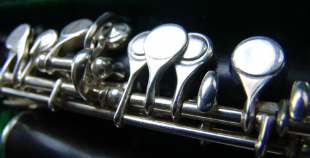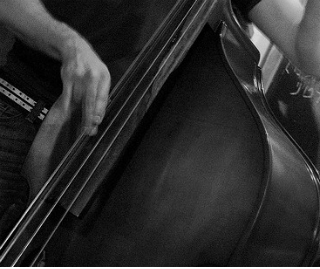Instrument Range and the Piano Keyboard

Another area where the piano comes in handy is when it comes to instrument range.
Instrument range is the span, or distance, from the lowest pitch a musical instrument is able to produce, up to its highest pitch. An instrument with a wide range means it is capable of playing a wide span of pitches, the opposite for a narrow range.
Learning an instrument’s range is important for getting a better understanding of the instrument’s capabilities, its strengths and weaknesses. Composers, arrangers, and orchestrators need to learn the ranges of all instruments that they work with. In order to write for a specific instrument, it’s absolutely essential to know what the instrument can and cannot do. Exploring range can also deepen one’s understanding of and appreciation for music in general.

Vocal Range
A great way to demonstrate the concept of range is with the human voice. Pause for a moment, and find the very lowest note you can sing comfortably. Now find the highest.
This distance, from the lowest note you can sing to the highest, is your range. It’s that simple.
Every person’s voice has its own range; some narrower, and some wider. (It may also possible to increase one’s range through training and practice.) When it comes to voice, we refer to this as vocal range. In the same way, every musical instrument has its own range, and that is known as instrument range.
The Piano and Range
The piano keyboard is the perfect tool for learning the ranges of various instruments.
For one thing, the piano is a visual instrument. We can learn to picture the range of each instrument on the keyboard, as we will see soon.
Also, an 88-key piano has a huge range of more than 7 octaves. This allows us to view other instruments’ smaller ranges in relation to it.
Size and Location
In order to understand instrument range, we need two pieces of info:
1) Range Size: How wide a span of pitches can it play?
2) Range Location: Where is that range located?
If all we knew about an instrument’s range is that it’s two octaves wide, we would still have no idea which two octaves it can play. So range size alone isn’t enough.


Range location, the 2nd piece of information, tells us the exact location of the instrument’s pitches.
Learning instrument range in relation to a piano keyboard tells us both factors in one shot. At a glance, we can tell how wide the range is, and where it is on the keyboard.
Octave Registers and Instrument Range
Last lesson, we discovered the basic sound of each octave register, all the way from Octave 1 up through Octave 7.
These octave registers don’t just exist on a piano. They are the basic areas of pitch in music, regardless of which instrument we happen to be using. We just happened to learn about them on the piano, and that’s also the easiest way to see them. But these same notes, registers, and pitch qualities apply to all instruments.
Nearly every instrument or voice has a range that falls somewhere within those 7 octave registers. Once we identify the registers in which an instrument can play, we can already get an accurate idea of what kind of pitches the instrument will produce (even before we hear them). The same descriptions we gave each octave register on the piano apply equally to all other instruments – e.g. medium, moderately low, high, etc.
Let’s take a look at a couple of instrument range examples to see how this works:

The Piccolo
The piccolo is the smallest instrument in the flute family. It is famous for being the highest and most piercing instrument in the orchestra. It has a range of slightly less than 3 octaves, as we can see in the range diagram below. The location of the piccolo’s range is from D5 to C8.
Even before we hear what it sounds like, we can already guess that its pitches will range from moderately high in its lowest octave (from about D5-B5) up to extremely high in its highest octave (C7-C8):

This is an audio example of the piccolo playing a short (original) melody:
And here’s a demonstration of the piccolo’s range:
The Double Bass
For our next example of instrument range, let’s take a look at an instrument whose range is way down at the other end of the pitch spectrum, the double bass.
The double bass (also known as contrabass, jazz bass, upright bass, or about a zillion other names) is the lowest instrument in the violin family, or string section, of an orchestra. It’s a very popular instrument, commonly used as the bass instrument in jazz (1 player), as well as in the orchestra (a whole section of double basses).


The instrument range diagram above shows us that the double bass also has a range of nearly 3 octaves. This time, however, the range is located on the opposite end of the pitch spectrum, from E1 up to G4. Once again, without even hearing it, we can get an idea of the pitch qualities of the double bass. The pitches range from extremely low (E1-B1) up to medium at the top end (C4-G4).
The example below demonstrates the sound of a double bass playing a type of background melody called an ostinato. It is being played by plucking the strings (known as “pizzicato”) instead of with a bow:
And here’s a quick demo of the range of the double bass, from low to high (playing the minor pentatonic scale, and using the bow this time):
We can see clearly that even though the piccolo and double bass are similar in the size of their ranges, the pitch locations of those ranges are on opposite ends of the keyboard. The piccolo is a piercing, high-pitched instrument, and the double bass a very deep, low sounding instrument.
Memorizing Instrument Range
When learning to write for different instruments, one of the first things you need to learn is the ranges of each one. Knowing the range of every instrument does require some memorization, but using what we’ve learned in this lesson, we can get a better head start.
Instead of just memorizing instrument ranges by the note names alone (e.g. E4- A6), now we can actually visualize each range on a keyboard diagram in our head (or draw our own on paper). This makes the memorization process much easier, since we have a nice visual to go along with the information!
Also, we know how to analyze the range in terms of size, as well as its location within the pitch spectrum and the sound that goes with that (low, medium, etc.).

Challenge
Try It On Your Own Instrument
If you play (or would like to learn how to play) an instrument other than piano, try to figure out the range of your instrument.
There are two basic methods to do this: 1)On your own, by comparing the pitch of its notes with a piano 2)Look it up in an orchestration book or an instrument range chart like this.
Once you’ve identified the range, analyze its size and location within the pitch spectrum. This will give you a much better sense of your instrument’s capabilities and qualities. You can try the same thing with your own vocal range.
Image Attribution:
PICT2105 The Beat Goes On by HippieDude ©2005 CC BY 2.0
Testing her vocal cords… by dental ben ©2009 CC BY 2.0
Marakya Restaurant; Jerusalem, Israel 2008 by Raffaele Esposito ©2008 CC BY 2.0